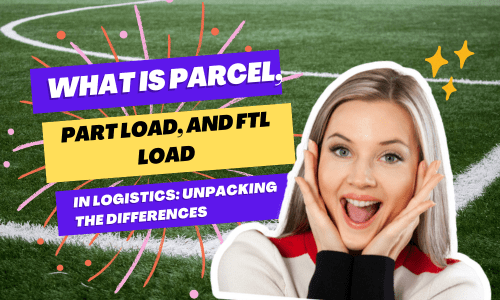What is Parcel, Part Load, and FTL Load in Logistics: In the dynamic world of logistics, understanding the nuances of parcel, part load (LTL – Less Than Truckload), and FTL load (Full Truckload) shipping is essential for businesses aiming to optimize their supply chains.
Parcel shipping involves the efficient transportation of small to medium-sized packages, making it ideal for e-commerce and retail. Part load, on the other hand, allows shippers to share truck space and costs with other businesses, offering cost-effective solutions for moderate shipping volumes. Meanwhile, FTL load shipping dedicates an entire truck to a single shipment, perfect for large cargo volumes and maximum control.
By grasping the distinctions between these logistics options, companies can streamline their shipping processes, reduce costs, and ensure goods reach their destinations efficiently. This knowledge is not only vital for logistics professionals but also for businesses seeking to enhance their online visibility and SEO performance in the competitive logistics industry.
Parcel:
- Volume and Size: Parcel shipments are characterized by their small size and lightweight nature. They are typically individual items or small packages that can be easily carried and handled by a single person.
- Usage: Parcel shipping is commonly associated with e-commerce businesses, retail, and individual consumer shipments. It is the preferred method for delivering products directly to residential addresses.
- Pricing: Pricing for parcel shipments is often based on factors like weight, size, and destination. Couriers and postal services typically offer tiered pricing structures based on these parameters.
- Speed: Parcel shipments are known for their speed and agility, with options for express or same-day deliveries, making them suitable for time-sensitive goods.
- Examples: Sending a single book, a small electronic gadget, clothing items, or small online purchases are common scenarios for parcel shipping.
Related Post: What is Tar ( Truck Arrival Report)
Part Load (LTL – Less Than Truckload):
- Volume and Size: LTL shipments are larger than parcels but not large enough to fill an entire truck. They usually consist of multiple pallets or crates, with varying sizes and weights.
- Usage: LTL shipping is preferred by businesses that have moderate shipping needs. It allows multiple shippers to share space on a single truck, reducing costs for each shipper.
- Pricing: Pricing for LTL shipments is typically based on factors like the volume of space occupied, weight, distance, and the number of stops or terminals involved.
- Cost Efficiency: LTL shipping is cost-effective for businesses that don’t require a full truckload but still want to benefit from shared transportation costs.
- Examples: Sending several pallets of products from a manufacturer to a distribution center, or shipping goods from a regional warehouse to retail stores are examples of LTL shipments.
FTL Load (Full Truckload):
- Volume and Size: FTL shipments involve filling an entire truck with cargo. The volume and weight of the shipment entirely occupy the truck’s capacity.
- Usage: FTL shipping is suitable for businesses with substantial shipping volumes or larger cargo that requires the exclusivity and control of an entire truck.
- Pricing: FTL shipments are priced based on factors like the distance, the type of goods, and any additional services required, such as specialized handling or temperature-controlled transport.
- Exclusivity: FTL shipments provide the shipper with exclusivity over the entire truck, ensuring that their cargo is not mixed with other shipments.
- Examples: Shipping a large quantity of goods from a manufacturer to a major retailer, transporting bulk materials from a supplier to a construction site, or moving a significant quantity of goods for distribution are examples of FTL shipments.
In summary, the choice between Parcel, LTL, or FTL shipping depends on the specific logistics needs of a business, including the size and volume of shipments, cost considerations, and delivery timeframes. Each method offers distinct advantages and caters to different aspects of the supply chain and logistics industry.
You Can Track Also
👉 RSMSSB Recruitment 2024: 64,265 पदों पर सरकारी नौकरी का सुनहरा अवसर